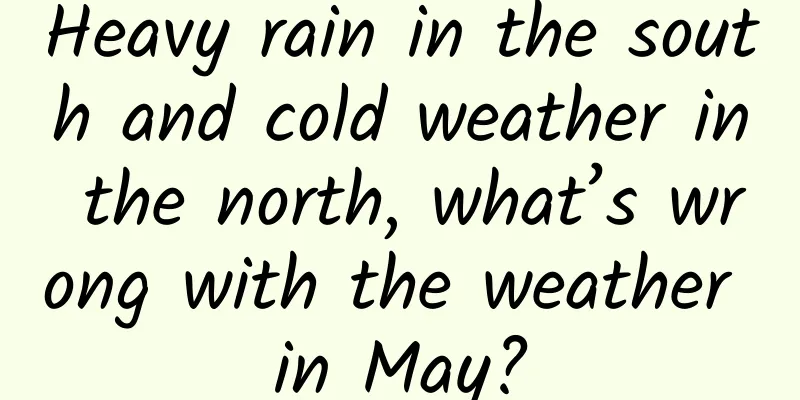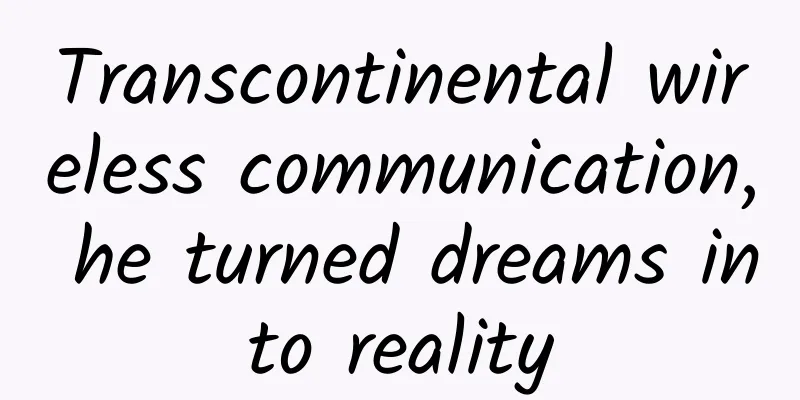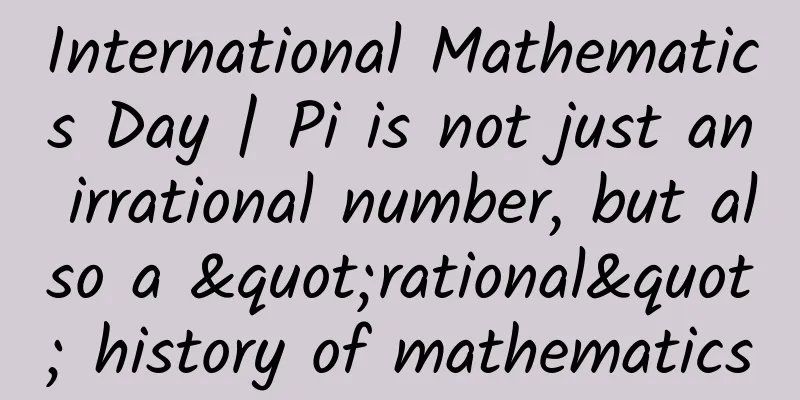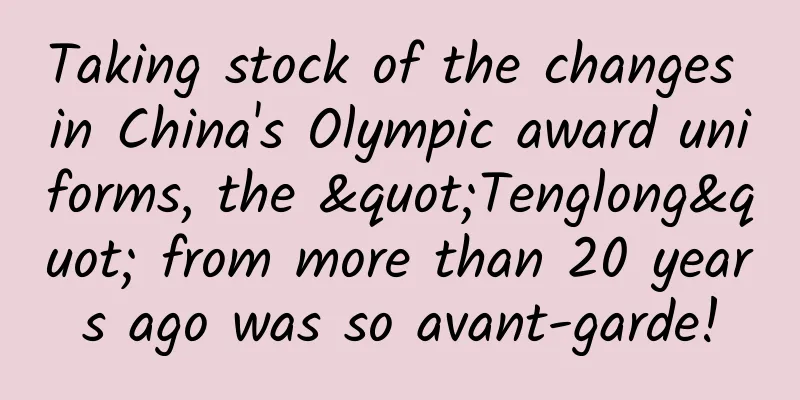The fierce competition between the two brightest minds made the chemical bond theory compatible [Part 1]
![The fierce competition between the two brightest minds made the chemical bond theory compatible [Part 1]](/upload/images/67f206819f85f.webp)
|
How atoms connect to form molecules is the primary problem faced in the study of material structure. The establishment and evolution of chemical bond theory records the process of several generations of chemists exploring the mysteries of the microscopic world, and is a multi-act drama that witnesses the development of modern chemistry. Note: Non-professional readers can skip the technical details in the boxes in this article without affecting the overall understanding. Written by Zheng Chao (Researcher at Shanghai Institute of Organic Chemistry, Chinese Academy of Sciences) Nature is like a two-faced Sphinx: on one hand, she stubbornly rejects every clumsy attempt to break into her secret realm; on the other hand, she opens her arms and unreservedly accepts wise explorers who have understood the true meaning of all things. —— RS Mulliken What is the essence of the world? How should we understand the world? Faced with such ultimate philosophical questions, ancient sages in the East and the West all placed their hopes for answers on the temporarily unattainable microscopic realm. "If you cut off a one-foot-long stick in half every day, it will never run out for ten thousand years." These few words in "Zhuangzi·Tianxia" contain the simple idea that matter is infinitely divisible. On the contrary, "Mozi·Jingshuoxia" says "If there is nothing but half, it cannot be cut," meaning that this continuous operation of cutting off half will always be impossible to continue. Almost at the same time, the ancient Greek naturalist philosopher Democritus believed that there was a clear end to the division of matter: atoms. Everything in the world is made up of atoms, and the cause of everything that happens in nature can be found in atoms. It took more than two thousand years for atoms to develop from philosophical speculation to scientific concepts. In the early 19th century, J. Dalton proposed the atomic theory in the modern scientific sense: each element corresponds to an indivisible atom with specific properties, and different types of atoms can combine with each other in simple integer ratios. Avogadro further pointed out that the result of this combination is the formation of molecules, which are the smallest units that maintain the chemical properties of substances. Only by seeing the details can we know the details. It is the mission shared by physicists and chemists to explore the properties and evolution laws of substances by studying molecular structure. However, this road is extremely tortuous. Atoms and molecules are so small that their reality has always been in doubt in the era when there was no direct means of observation. The more difficult question is, what kind of "affinity" do atoms rely on to connect with each other, gather together to form a wide variety of ever-changing molecules? In 1897, J. J. Thomson discovered electrons in cathode rays; in 1911, E. Rutherford inferred the existence of atomic nuclei from alpha particle scattering experiments. Humans finally opened the door to the microscopic world. The first three decades of the 20th century witnessed the greatest scientific revolution since Newton. The exquisite equations of quantum mechanics have revealed all the laws that atoms and molecules must follow in their interactions. However, this does not mean that material structures and chemical reactions can be completely transformed into mathematical problems and accurately solved, because the huge amount of calculations required to solve these equations and the complex molecular structure constitute an irreconcilable contradiction. Chemists need to find other solutions beyond the single reductionist logic, and establish a thinking tool that is compatible with the basic principles of quantum mechanics and can avoid tedious mathematical calculations, and legislate the movement of the molecular world in a way that is easy for humans to understand. The formation and evolution of the "chemical bond" theory is a multi-act drama staged on this road, and is the crystallization of the profound insights and creative thinking of several generations of chemists over more than a hundred years. Iron painting and silver hook | Pattern composed of dots, lines and arrows In the 1850s, organic chemists had generally accepted the concepts of atoms and molecules. In 1852, when studying organozinc reagents, E. Frankland first proposed the concept of "bond" to describe the connection between two atoms. Subsequently, a group of chemists represented by FA Kekulé, AS Couper, and A. Butlerov used the concept of chemical bonds to construct the basic theory of organic chemistry. According to the existing electrochemical knowledge at the time, the connection between atoms was believed to originate from the mutual attraction between positive and negative charges; after Thomson discovered the electron, it was further attributed to the transfer of electrons between atoms. For example, a sodium atom loses an electron to become a positive ion, a chloride ion gains an electron to become a negative ion, and positive and negative ions combine to form sodium chloride. However, the simple electron transfer theory has encountered great challenges in explaining the chemical bonds between atoms of the same type, especially between carbon atoms that exist in large quantities in organic molecules. Even if various patches are added to this theory, the results are not always convincing. The two American chemists who changed this situation were GN Lewis and I. Langmuir. Both of them studied under the guidance of German physical chemistry master W. Nerst in their early years, but took completely different career paths after returning to the United States. Lewis taught at Harvard University, Massachusetts Institute of Technology, University of California, Berkeley and other universities, and made great achievements in chemical thermodynamics, molecular structure and acid-base theory, and isotope chemistry. Langmuir spent his entire career at General Electric Company and was one of the few chemists who made first-class basic research in the industry. With his research and discoveries in the field of surface chemistry, especially his contribution to gas adsorption theory, Langmuir was awarded the 1932 Nobel Prize in Chemistry. In 1985, the American Chemical Society founded a journal called Langmuir, which specializes in publishing research papers on surface and interface chemistry and colloid chemistry. This is the only academic journal named after a person among the nearly 100 academic journals published by the American Chemical Society. Left: GN Lewis (1875-1946); Right: I. Langmuir (1881-1957), winner of the 1932 Nobel Prize in Chemistry Special. Lewis thus realized that the electrons in atoms are not equivalent, but are likely to exist in some form of "pairs". It is more difficult to break up paired electrons than to take away "single" electrons. On the other hand, most stable molecules have an even number of electrons. Molecules with an odd number of electrons (such as free radicals) are generally more active and can combine with each other to make the number of electrons in the molecule even. This allowed Lewis to further link electron pairing with chemical bonds, believing that two atoms can share a pair of electrons. This pair of electrons is located between the two nuclei in space, and the electron pair forms a bond between the two atoms through the attraction between the electron pair and the nucleus. The degree of electron pair sharing is related to the ability of atoms to bind electrons. When the ability of two atoms to bind electrons is very different, the electron pair will be heavily biased towards the atom with stronger binding ability, and the shared electron pair will return to electron transfer. In other words, the "shared electron pair" proposed by Lewis is a more universal theoretical framework for chemical bonds. Why can two electrons overcome the repulsion of the same charge and pair up? Lewis absorbed the insights of a visiting student, AL Parson - electrons move around the nucleus to generate a ring current, which is magnetic, so electron pairing may be caused by some kind of "magnetic effect". Today we know that the pairing of electrons with opposite spins is an inevitable arrangement under the Pauli exclusion principle, and has nothing to do with the magnetic effect in the classical sense. However, the Parson-Lewis hypothesis is by no means a fool's errand, but rather very forward-looking, and can be regarded as a rough description of the electron spin phenomenon and the effect of magnetic moment. After all, it was ten years later (1925) that Pauli (W. Pauli) proposed his famous exclusion principle, and Uhlenbeck (GE Uhlenbeck) and Goudsmit (SA Goudsmit) discovered electron spin. Lewis invented an interesting "cubic atom" model: placing the valence electrons of atoms at the vertices of a cube, and using two cubes sharing an edge to represent electron pairing and bonding. Another more concise and intuitive notation (Lewis structure) is to use two dots next to the element symbol to represent a pair of electrons, and a line segment to represent atoms bonding through shared electron pairs. Although chemists used dots and lines to assist in representing the composition of molecules as early as the 19th century, it was only from Lewis that the dots and lines between element symbols had the connotation of microscopic structure. Lewis's theory was published in two long articles in 1913 and 1916, and its widespread dissemination was inseparable from Langmuir's promotion. Langmuir coined the term "covalent bond" to summarize the shared electron pair bonding, and developed and popularized the concept of covalent bond through in-depth review articles and infectious speeches. L. Pauling and RS Mulliken, key figures in the history of the development of chemical bond theory that will appear in the following text, both said in their memoirs that they learned about Lewis' great contribution by reading Langmuir's articles. In the 1920s, the theory of Louis-Langmuir spread to the British Isles, inspiring a group of organic chemists there to use electron theory to examine the structure and reaction mechanism of organic molecules, especially how to understand the reaction properties of conjugated hydrocarbons and aromatic hydrocarbons with alternating single and double bonds. In the fierce ideological confrontation, R. Robinson of the University of Manchester/Oxford University first realized that some shared electron pairs were not limited between adjacent atoms, but could "move" within the molecule. The use of a single Lewis formula cannot fully describe the structure and reaction of these molecules. He invented a method of using single-hook or double-hook arrows to mark the flow direction of a single electron or electron pair, explaining the "interconversion" of molecules between neutral and polar structures. CK Ingold of the University of Leeds/University College London named this interconversion the "mediation effect" and confirmed through the measurement of the molecular dipole moment and spectral experiments that the movement of electron pairs is an inherent property of the molecule, not just a "stress phenomenon" when it participates in chemical reactions. Based on Lewis structure and electronic theory, Ingold developed a complete set of paradigms and languages to describe organic reaction mechanisms (including terms such as electrophilicity/nucleophilicity and SN1/SN2 substitution that are still used today), and established the interdisciplinary subject of physical organic chemistry. Left: R. Robinson (1886~1975), winner of the 1947 Nobel Prize in Chemistry; Right: CK Ingold (1893~1970) Lewis structures and electron mobility | Some images from: Chem. Rev. 1934, 34, 225. J. Compt. Chem. 2007, 28, 51. In addition to studying reaction mechanisms, Robinson was also an epoch-making master of organic synthesis. In 1917, he used a three-step reaction to synthesize the natural product tropinone, which refreshed people's understanding of the creativity of organic synthesis. Robinson won the 1947 Nobel Prize in Chemistry for his contribution to the field of alkaloid synthesis. However, in his autobiography published in his later years, Robinson said that the electronic theory of organic reactions was his most important scientific achievement. Unfortunately, Robinson and Ingold had a deep grudge over the priority of the theory, mainly because Robinson was extremely dissatisfied with Ingold's failure to properly cite his work when publishing papers. According to a recently published archival study, from 1940 to 1970, Ingold was nominated as a candidate for the Nobel Prize in Chemistry 112 times by 77 nominees from 22 countries, but he never got his wish. Researchers in the history of chemistry generally believe that this was the result of Robinson's long-term obstruction by using his influence on the Nobel Prize selection committee. In the twenty years from Lewis to Ingold, the iron-drawing silver hook composed of dots, lines and arrows gradually developed into the "universal language" of organic chemistry, providing a basic basis for later generations to think about the structure and bonding of organic molecules. It is no exaggeration to say that the Lewis structure has changed the face of organic chemistry research and laid a unified formal logic and unique spiritual temperament for this discipline. Two flowers in bloom | Common starting point, different paths As a product of the old quantum theory era, the Lewis structure is destined to be unable to transcend the limitations of being a descriptive concept. It is impossible to describe the complexity and diversity of organic molecular structure and bonding from a quantitative perspective: the rich intermediate states between complete covalent bonds and complete ionic bonds are difficult to represent with only dot and line patterns. To deeply understand the nature of chemical bonds and to clarify the laws of motion of electrons in molecular systems, we must still start from quantum mechanics. However, the difficulty lies in the fact that for any chemical system with more than one electron, the Schrödinger equation not only cannot be solved analytically, but even numerical calculations are impractical before the advent of computers. In order to deal with chemical bond problems, new approximate tools that integrate theoretical calculations with concise chemical images must be developed. Fortunately, a group of the most talented young people in the 1920s and 1930s developed two sets of such tools for us: valence bond theory (VB) and molecular orbital theory (MO). Starting from the common starting point of solving the hydrogen molecule, they evolved along very different paths, and finally reached the same destination, depicting the wonderful scenes of the molecular world from different perspectives. Two flowers bloom, each with its own characteristics. Let's start with the valence bond theory. The milestone figure on this road is undoubtedly Pauling, a scientific giant who came from a poor pharmacist family in Portland, USA. Pauling showed his talent in chemistry very early. In his second year at Oregon Agricultural College, he was hired to teach quantitative chemistry courses to students at the same school and was nicknamed "Professor Boy". After graduating from college, Pauling came to Munich, Germany, to study physics with A. Sommerfeld, and met almost all the important figures in the golden age of quantum mechanics in Europe, such as Heisenberg (W. Heisenberg), Pauli, Schrödinger (E. Schrödinger), Dirac (PAM Dirac). Extraordinary talent and unique experience enabled Pauling to connect quantum mechanics and chemistry, two originally isolated scientific fields. He mastered the mathematical and physical knowledge that most chemists of that era did not know, and was far more familiar with the difficult problems that needed to be solved in chemistry than ordinary physicists. L. Pauling (1901-1994), winner of the 1954 Nobel Prize in Chemistry and the 1962 Nobel Peace Prize In 1927, two postdoctoral fellows under Schrödinger's guidance, W. Heitler and F. London, first successfully applied quantum mechanics to hydrogen molecules. Their calculations showed that two independent hydrogen atoms could reduce the energy of the system by "exchanging electrons" when approaching each other, while increasing the electron density between the two hydrogen nuclei, and finally forming a hydrogen-hydrogen chemical bond. Pauling once communicated with Heitler and London in person in Zurich, Switzerland. He was keenly aware of the connection between their calculations and Louis Langmuir's concept of covalent bonds, and firmly believed that this was an excellent way to introduce quantum mechanics into the problem of chemical bonds. After returning to the United States, Pauling worked at the California Institute of Technology. Between 1931 and 1933, he published seven papers in a row, systematically expounding the valence bond theory, the core ideas of which include: the valence atomic orbitals of two atoms overlap to form a covalent bond; the symmetry of the atomic orbitals involved in bonding must match; the direction of the covalent bond is determined by the direction of maximum overlap of the atomic orbitals. Pauling further pointed out that in order to meet the needs of bonding, valence atomic orbitals with similar energies can form hybrid orbitals through linear combination. He used For complex organic molecules (such as aromatic hydrocarbons), Pauling proposed the "resonance theory": the real structure of a molecule is the resonance of those canonical structures that can be represented by Lewis formulas. Resonance causes the energy of the system to decrease, and the real energy of the molecule is lower than that of all canonical structures. The lower the energy of a certain canonical structure, the greater its contribution to the real structure of the system. Based on the experimental values of the enthalpy of formation of diatomic molecules, Pauling established the electronegativity scale of elements, which not only quantified the ability of atoms of different elements to bind electrons, but also, in principle, can quantitatively analyze the covalency or ionic degree of any chemical bond. In Pauling's view, valence bond theory (especially resonance theory) has perfectly characterized all types of chemical bonds from ionic crystals to organic molecules and even metals. Even if it is not absolutely rigorous in mathematics, it is enough to reveal the nature of chemical bonds. In 1938, Pauling published his famous book "The Nature of Chemical Bonds", which was reprinted twice in 1940 and 1960 (the third edition of the book has Chinese translations by Mr. Lu Jiaxi, Mr. Huang Yaozeng and others in China). Research on the nature of chemical bonds won Pauling numerous honors, including the 1954 Nobel Prize in Chemistry. Over time, Pauling's interest gradually turned to biological macromolecules. He was a pioneer in using X-ray crystal diffraction experiments to determine the structure of biological macromolecules. Based on his research on hemoglobin, Pauling proposed the theory of α helix and β fold as the secondary structure of proteins. After World War II, Pauling was already an important figure in the American scientific community, and the consequences of the war prompted him to become an active pacifist. He participated in the Emergency Committee of Atomic Scientists initiated by Einstein and Szilard, calling on people to be vigilant about the dangers of nuclear weapons. Pauling was awarded the 1962 Nobel Peace Prize for his efforts in opposing the US-Soviet nuclear arms race. He is the only person to have won the Nobel Prize twice. Various versions of "The Nature of the Chemical Bond" | Image source: Wikipedia While Pauling vigorously promoted the development of valence bond theory, exploration on another path was also quietly underway. However, to some extent, the initial establishment of molecular orbital theory did not stem from the need to solve chemical problems, but was a natural continuation of physicists' long-term research on atomic spectra. Gaseous atoms produce linear spectra when excited, which is a phenomenon that physicists have been very familiar with since the mid-19th century. The wavelength of atomic spectral lines is closely related to their electronic energy levels. Studying atomic spectra is an important driving force for understanding atomic structure and giving birth to quantum theory. In the 1920s, as the experiments and theories of atomic spectra became increasingly sophisticated, people began to turn their attention to more complex molecular spectra. Mulliken and F. Hund, two young men who have already emerged in the field of spectroscopy, opened up a new way of thinking about dealing with chemical bond problems from a completely different perspective from chemists in the process of exploring the laws of molecular spectra. RS Mulliken (left) (1896~1986), winner of the 1966 Nobel Prize in Chemistry, and F. Hund (right) (1896~1997) In 1925, Mulliken went to Europe as a postdoctoral fellow at Harvard University with the support of the National Research Council of the United States. He first met Hund in Göttingen, Germany, an assistant to Born, the head of the Institute of Theoretical Physics at the University of Göttingen. It was also during this period that Hund published his most well-known result: Hund's rule - when electrons are arranged in degenerate orbits, the state with the highest spin multiplicity has the lowest energy. The common research interests made Mulliken and Hund regard each other as academic confidants, and they established a friendship that lasted for more than half a century. Between 1925 and 1928, Mulliken and Hund proposed a "united atom" strategy to deal with the problem of diatomic molecules. Unlike the valence bond theory, which considers two independent hydrogen atoms gradually approaching each other and connecting to form a hydrogen molecule by exchanging electrons, the united atom strategy assumes that the hydrogen molecule is "split" from a helium atom containing two electrons. This splitting makes the 1s atom of the helium atom In 1929, JE Lennard-Jones of the University of Bristol in the UK proposed to construct molecular orbitals using the linear combination of atomic orbitals (LCAO). From 1930 to 1931, E. Hückel of the University of Stuttgart in Germany applied molecular orbital theory to organic conjugated molecules (especially alternating hydrocarbons and aromatic hydrocarbons). He was able to conveniently calculate the molecular orbital coefficients and energy levels of the conjugated system by separating σ and π electrons and ignoring the exchange integral and overlap integral of non-adjacent π electrons. On this basis, Hückel pointed out that planar cyclic conjugated molecules with π electrons of 4n + 2 have "aromaticity" (Hückel's rule), which provided a clear criterion for the aromaticity problem that has long plagued organic chemists. Mulliken signed stamp first day cover | Source: amazon.com The important difference between valence bond theory and molecular orbital theory is how to view the "delocalization" of electrons in molecular systems. From the perspective of valence bond theory, shared electron pairs are first completely localized between adjacent atoms, and then the delocalization characteristics of electrons are reflected through the resonance of multiple regular structures. This inherits the general understanding of molecular structure by organic chemists. Molecular orbital theory completely abandons the assumption of electron localization and allows all electrons to be fully delocalized in molecular orbitals. Using a series of molecular orbitals to establish energy levels for the entire molecule can well correspond to the behavior of molecules in spectral experiments. Although there are great differences between valence bond theory and molecular orbital theory in basic principles and mathematical treatment methods, as early as 1932, JC Slater of MIT, who independently proposed the hybrid orbital method at the same time as Pauling, had proved the equivalence of the two: valence bond theory considering all regular structures and molecular orbital theory considering all electronic configurations will give consistent conclusions. In fact, by localizing the delocalized molecular orbitals through algebraic unitary transformations, a chemical image similar to valence bond theory can be obtained. Despite this, the molecular orbital theory was still coldly received by chemists in the first twenty years after it was proposed. It was not until the 1950s that its importance in chemistry was generally recognized. Mulliken, who taught at the University of Chicago in the United States, was awarded the 1966 Nobel Prize in Chemistry as the main founder of the molecular orbital theory. After winning the award, he received widespread congratulations from his academic colleagues, including a special congratulation from Hund. Mulliken highly praised Hund's important contribution to the establishment of the molecular orbital theory on many occasions, and he said that he had very much hoped to share the honor of the Nobel Prize with this good friend. This article is supported by the Science Popularization China Starry Sky Project Produced by: China Association for Science and Technology Department of Science Popularization Producer: China Science and Technology Press Co., Ltd., Beijing Zhongke Xinghe Culture Media Co., Ltd. Special Tips 1. Go to the "Featured Column" at the bottom of the menu of the "Fanpu" WeChat public account to read a series of popular science articles on different topics. 2. Fanpu provides a function to search articles by month. Follow the official account and reply with the four-digit year + month, such as "1903", to get the article index for March 2019, and so on. Copyright statement: Personal forwarding is welcome. Any form of media or organization is not allowed to reprint or excerpt without authorization. For reprint authorization, please contact the backstage of the "Fanpu" WeChat public account. |
>>: No need for data cables! How do mobile phones achieve wireless charging?
Recommend
Fighting monsters, carving, starting nuclear fusion, why are you everywhere?
When I was a kid, I sat in front of the TV and wa...
How can we-media write explosive articles? Use these 5 steps!
What should a complete advertising copy contain? ...
What are server logs? How to read the server log?
Although many webmasters now understand search ra...
App Annie: Five major trends in mobile apps for 2020
Recently, App Annie and BusinessofApps.com jointl...
The latest APP operation and promotion super strategy in 2015
In 2015, mobile Internet startup products face mo...
Do you have a hunch? How accurate are hunches, or do hunches really exist?
This is a very interesting question. There is no ...
What are the functions of Guangzhou car beauty mini program? How much does it cost to develop a car beauty WeChat mini program?
With the continuous development of China's eco...
Is the birthday greeting video of an African child real? How to send birthday wishes to African children?
Videos of African children holding up signs and R...
Who is so "bold" to "judge" Einstein?
Not long ago, a new book by Canadian science hist...
Interesting Stories about How Americans View Singles' Day
On November 11, Chinese online shoppers probably ...
Montmorillonite powder is out of stock! The new strain XBB mainly attacks the gastrointestinal tract? Rumor! Don’t believe it!
At the beginning of 2023, we saw various hot sear...
The ultimate goal of palace fighting: to undergo sex change and become emperor!
There are many problems in the world that come fr...
A man beat an elderly person and a child with a shovel in the street, resulting in one death and one serious injury! what is going on?
On July 22, a surveillance video of a man in Baod...
Typhoon Dusurui has landed! These areas need to be prepared for heavy rain and torrential rain!
July 28, 10:00 The Central Meteorological Observa...
Do fried chicken and first snow go together? Here are 12 dangers you need to know
Northeast China has already welcomed the first sn...









